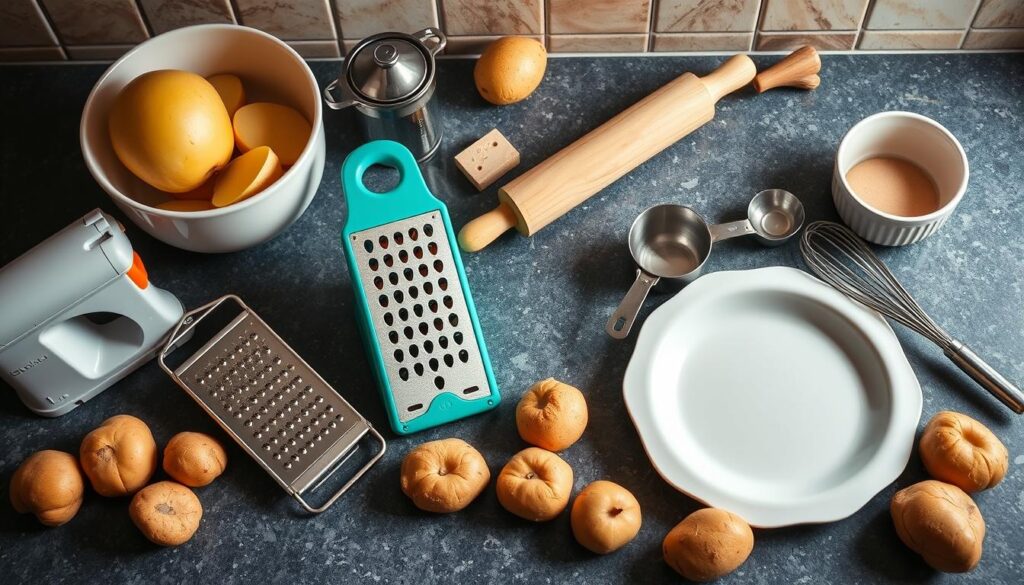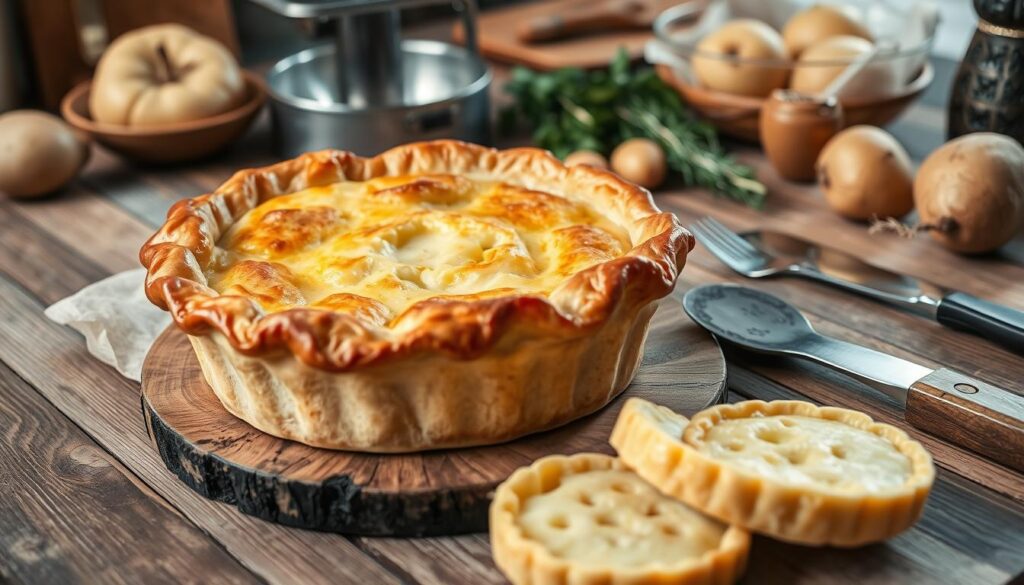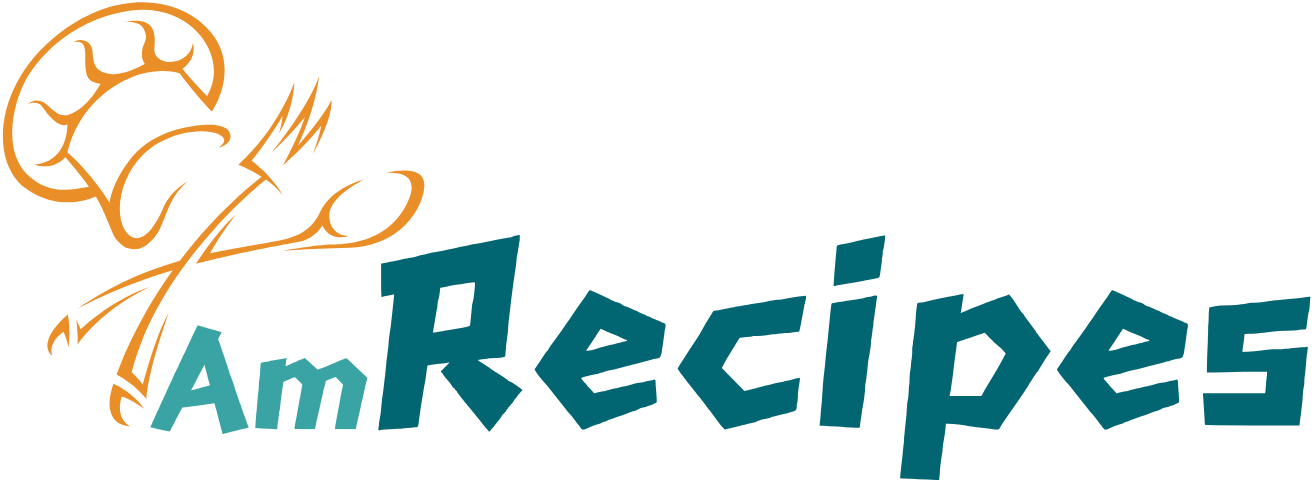Table of Contents
As you prepare for the Jewish holiday, you’re likely thinking about traditional desserts and recipes. The passover potato pie is a standout, blending tradition with taste. It’s a dish that connects you with your heritage and creates memories with loved ones.
In this article, you’ll learn to make a classic passover potato pie. It’s perfect for any Jewish holiday gathering. You’ll discover the secrets to making a dish that’s both authentic and delicious. Whether you’re a seasoned cook or just starting, making this pie is a fun and rewarding experience.
Key Takeaways
- Learn how to make a simple passover potato pie that tastes like tradition
- Discover the rich history and cultural significance of passover potato pie in Jewish holiday cuisine
- Get tips and tricks for making a delicious and authentic passover potato pie
- Find out how to incorporate traditional ingredients and modern twists into your recipe
- Learn how to make a passover potato pie that’s perfect for any Jewish holiday gathering
- Get started with a classic recipe that’s easy to follow and fun to make
The Rich History of Passover Potato Pie
When you look into holiday baking ideas, you might find the Passover potato pie. It’s also known as potato kugel pie. This dish comes from Eastern European Jewish cuisine, where it was a side dish during Passover.
The story of Passover potato pie starts with Eastern European Jews. They used potatoes and other items to make a tasty dish. Today, you can find kosher for Passover desserts that use traditional ingredients like matzo meal and eggs.
Origins in Eastern European Jewish Cuisine
In Eastern European Jewish cuisine, potatoes were key. They were used in many dishes, including pies and kugels. The Passover potato pie likely came from these dishes and is now a favorite for many Jewish families.
Evolution Through Generations
Jewish families took their recipes with them when they moved to new places. This included the Passover potato pie. Over time, new ingredients and ways of cooking were added, leading to many potato kugel pie variations.
Modern Interpretations
Today, you can find many new takes on the traditional Passover potato pie. These include kosher for Passover desserts with fresh ingredients and cooking methods. Whether you want a classic recipe or something new, there’s a Passover potato pie for you.
The Passover potato pie is a joy for those interested in holiday baking ideas and Jewish cuisine. Its rich history and many interpretations make it a standout dish.
| Traditional Ingredients | Modern Variations |
|---|---|
| Potatoes, onions, eggs, matzo meal | Sweet potatoes, garlic, rosemary, olive oil |
| Butter, salt, pepper | Coconut oil, paprika, turmeric |
Essential Ingredients for Your Perfect Passover Potato Pie
To make a delicious Passover potato pie, you need the right ingredients. Easy Passover recipes require key ingredients. Matzo meal is a must for Jewish Passover dishes. You’ll also need potatoes and other traditional items for your pie.
Here are some key ingredients you will need:
- Matzo meal: This is a crucial ingredient in many Jewish Passover dishes, including matzo meal recipes.
- Potatoes: Choose high-quality potatoes that are suitable for baking.
- Eggs: Eggs are used to bind the ingredients together and add moisture to the pie.
- Onions: Onions add flavor and texture to the pie.
When picking ingredients for your Passover potato pie, choose fresh and high-quality ones. This ensures your pie is delicious and flavorful. You can find many easy Passover recipes online that use matzo meal and other traditional ingredients. By following these recipes and using the right ingredients, you can create a delicious Jewish Passover dish that your family and friends will love.
Remember to always check the ingredient labels to ensure that they are kosher for Passover. With the right ingredients and a little bit of practice, you can create a perfect Passover potato pie that will become a family tradition.
Kitchen Tools and Equipment You’ll Need
To make a delicious passover potato pie, you need the right tools and equipment. Preparing traditional Jewish desserts like passover potato pie is easier with the right tools. As you try out different Jewish holiday recipes, the right equipment will make the process simpler and the results better.
Choosing between traditional and modern equipment for your passover potato pie is up to you. Traditional tools, like a manual potato masher, can add authenticity to your cooking. Modern tools, such as a food processor, can save you time and effort.
Essential Baking Tools
For your passover potato pie, you’ll need a mixing bowl, a measuring cup, and a baking dish. You’ll also need a pastry brush for the egg wash on the crust. The right tools and equipment help you get the perfect texture and flavor, making your pie stand out.

Investing in the right kitchen tools and equipment will help you make a delicious passover potato pie. It will impress your family and friends. Whether you’re experienced or new to baking, the right equipment is key to making your traditional Jewish desserts great.
Step-by-Step Guide to Making Passover Potato Pie
To make a delicious Passover potato pie, also known as potato kugel pie, follow a few simple steps. This traditional dish is a staple of kosher for passover desserts and is perfect for holiday baking ideas. Start by preheating your oven to 375°F (190°C).
Next, prepare the ingredients, including grated potatoes, onions, and eggs. You can also add some garlic and salt to taste. In a large bowl, combine the grated potatoes, onions, eggs, garlic, and salt. Mix well to combine.
Now, it’s time to assemble the pie. Grease a 9-inch pie dish with some oil and add the potato mixture. Smooth the top and make sure the edges are even. You can also add some additional ingredients, such as chopped herbs or grated cheese, to give your pie an extra boost of flavor.
Here’s a simple recipe to follow:
- 2 large potatoes, grated
- 1 large onion, grated
- 2 eggs
- 1 clove of garlic, minced
- Salt to taste
Once you’ve assembled the pie, bake it in the preheated oven for about 45 minutes, or until the top is golden brown and the potatoes are tender. You can serve your Passover potato pie as a side dish or as a main course, accompanied by your favorite holiday baking ideas and kosher for passover desserts.
With these simple steps, you can create a delicious and traditional Passover potato pie that’s perfect for any holiday baking ideas or kosher for passover desserts. So go ahead, give it a try, and enjoy the delicious taste of this traditional dish!
| Ingredient | Quantity |
|---|---|
| Potatoes | 2 large |
| Onion | 1 large |
| Eggs | 2 |
| Garlic | 1 clove |
| Salt | To taste |
Tips for Achieving the Perfect Texture
For a delicious Passover potato pie, texture is key. You want it fluffy and light, with a crispy, golden crust. Use 1/4 cup of matzo meal for every 2 cups of potato filling for the right mix.
When making your Jewish dishes, don’t overmix the filling. Stop mixing once it’s just combined. Overmixing makes the pie dense. Also, avoid overbaking to prevent a dry, crispy crust.
Getting the Right Consistency
For a light texture, mix boiled and mashed potatoes. Adding grated carrots or zucchini adds moisture and flavor.
Common Texture Problems and Solutions
If your pie is dense, add more matzo meal. For dryness, add oil or butter to the crust. For sogginess, bake it longer to crisp the crust.
| Problem | Solution |
|---|---|
| Dense pie | Add more matzo meal |
| Dry pie | Add more oil or butter |
| Soggy pie | Bake for a few more minutes |
Storage and Reheating Methods
Store your pie in an airtight container in the fridge for up to 3 days. To reheat, bake at 350°F for 20-25 minutes. This will make the crust crispy and the filling hot and fluffy.
Dietary Considerations and Substitutions
When making a passover potato pie, think about your guests’ dietary needs. You can make this traditional Jewish dessert fit for various diets, like gluten-free or vegan. Just swap out old ingredients for new ones, and your pie will be tasty and welcoming for everyone.
For example, use gluten-free flour instead of regular flour for guests with gluten issues. For vegan guests, try almond milk or soy milk instead of dairy. These changes let you enjoy your passover potato pie while meeting different dietary needs.
Also, remember to use kosher-friendly ingredients and avoid non-kosher products in Jewish holiday recipes like passover potato pie. This way, you can make a delicious and inclusive traditional Jewish dessert for all. Here are some tips for substitutions:
- Use gluten-free flour instead of traditional flour
- Replace dairy products with vegan-friendly alternatives
- Choose kosher-friendly ingredients
By following these tips, you can make a passover potato pie that suits many diets. It’s a great choice for your Jewish holiday recipes. With these swaps, you can share your favorite traditional Jewish desserts with everyone, no matter their dietary needs.
Serving Your Passover Potato Pie with Style
When serving your potato kugel pie, presentation matters a lot. You want to impress everyone with your holiday baking, like during Passover. Add a touch of elegance to your table with a charoset plate or fresh flowers.
To make your pie even better, try it with applesauce or sour cream. Or, for something new, pair it with roasted veggies or a green salad. These desserts are great for Passover.
Traditional Accompaniments
- Applesauce
- Sour cream
- Roasted vegetables
Modern Pairing Suggestions
- Fresh green salad
- Grilled meats or fish
- Steamed vegetables
By serving your potato kugel pie with flair, you’ll make your meal unforgettable. Try out different ideas to find the best way to celebrate Passover.
Making Your Pie Ahead of Time
Making your pie ahead of time is a big time-saver for easy passover recipes. Jewish passover dishes need careful planning and prep. But with a few tips, you can make a tasty matzo meal recipe that wows your guests.
To prep your pie ahead, make the filling and crust separately and freeze them. This lets you put the pie together and bake it when you’re ready. Here are some tips for freezing and reheating your pie:
- Freeze the filling and crust separately to prevent them from becoming soggy or stuck together.
- Use airtight containers or freezer bags to store the filling and crust.
- Label the containers or bags with the date and contents, so you can easily identify them later.
When you’re ready to bake, thaw the filling and crust in the fridge overnight. Then, assemble and bake as usual. With these tips, you can make a delicious Jewish passover dish that’s the highlight of your holiday meal.
Troubleshooting Common Challenges
When making a passover potato pie, you might face some common issues. These can affect how your pie turns out. Knowing how to fix these problems is key to a perfect pie.
Some common problems include a soggy crust or undercooked filling. Here are a few tips to help:
- Make sure your oven temperature is correct. An incorrect temperature can mess up your pie’s cooking.
- Choose high-starch potatoes for a fluffy filling.
- Avoid overmixing the filling to prevent it from becoming dense.

By following these tips, you can make a delicious passover potato pie. It’s great for Jewish holiday recipes and traditional desserts.
Remember, making a passover potato pie takes practice. Don’t worry if it doesn’t turn out right the first time. With more tries, you’ll get better at it. Soon, you’ll enjoy making this traditional dish for Jewish holidays.
| Common Challenge | Troubleshooting Tip |
|---|---|
| Soggy Crust | Check oven temperature and ensure that the crust is baked for the right amount of time. |
| Undercooked Filling | Use the right type of potatoes and don’t overmix the filling. |
Variations on the Classic Recipe
Exploring Passover desserts opens up a world of holiday baking ideas. The potato kugel pie is a classic that can be made in many ways. These variations make for unique and tasty kosher for Passover desserts.
Every culture has its own take on the potato kugel pie. Some add garlic or onions, while others use different potatoes. These changes add depth to your holiday baking.
Family-Inspired Twists
Family traditions shape our favorite recipes. You can put your own spin on the potato kugel pie. Try adding dried fruits or nuts, or use unique spices for a special flavor.
Contemporary Adaptations
Modern twists on old recipes are popular. You can make the potato kugel pie more modern by using gluten-free flours or adding a crunchy topping. These changes make for innovative kosher for Passover desserts.
- Adding caramelized onions or garlic to the filling
- Using sweet potatoes instead of regular potatoes
- Incorporating fresh herbs like parsley or dill
- Creating a gluten-free crust using alternative flours
These ideas are a great starting point for unique and tasty holiday baking. They’re perfect for Passover celebrations.
| Variation | Ingredients | Instructions |
|---|---|---|
| Classic Potato Kugel Pie | Potatoes, onions, eggs, flour | Preheat oven to 375°F. Mix filling ingredients and pour into crust. Bake for 45 minutes. |
| Sweet Potato Kugel Pie | Sweet potatoes, brown sugar, cinnamon | Preheat oven to 375°F. Mix filling ingredients and pour into crust. Bake for 40 minutes. |
Conclusion
Making a delicious Passover potato pie is a great way to honor Jewish cuisine. You’ll learn to make a dish that captures the spirit of Passover. It’s a way to bring your family and friends together.
Whether you stick to the classic recipe or try new twists, making this pie is easy and rewarding. With the right tools and a little practice, you’ll create a dessert that’s a part of your Passover traditions.
So, dive into the flavors of the past with your homemade Passover potato pie. Let it be the centerpiece of new memories and the essence of the holiday. Enjoy the process, and may your kitchen be filled with its delicious aroma.
FAQ
What is Passover potato pie?
Passover potato pie is a traditional Jewish dish eaten during Passover. It’s a savory pie with potatoes, matzo meal, and other Passover-friendly ingredients.
Why is Passover potato pie a staple of Jewish holiday cuisine?
Passover potato pie has a deep history and cultural importance in Jewish cuisine. It started in Eastern European Jewish communities. Over time, it became a cherished tradition during Passover.
What are the essential ingredients for a perfect Passover potato pie?
Key ingredients for a great Passover potato pie are matzo meal, potatoes, eggs, onions, and seasonings. The exact amounts and how to prepare them can vary. It depends on personal taste and traditional recipes.
What kitchen tools and equipment do I need to make Passover potato pie?
To make Passover potato pie, you’ll need basic baking tools. These include a mixing bowl, potato masher or ricer, baking dish, and oven. You might also use traditional or modern equipment based on your cooking style.
How do I ensure the perfect texture for my Passover potato pie?
For the perfect texture, focus on getting the right consistency. Avoid common texture problems. Use proper storage and reheating methods. This will help your pie turn out perfectly every time.
Can I make Passover potato pie ahead of time?
Yes, you can make Passover potato pie ahead of time. The recipe shows how to freeze and reheat the pie. This lets you prepare it in advance, saving time for your Passover celebration.
What are some common challenges I might face when making Passover potato pie?
Common challenges include a soggy crust, undercooked filling, and texture or consistency issues. The article offers troubleshooting tips and solutions. These will help you overcome these problems and achieve a perfect pie.
Are there any variations on the classic Passover potato pie recipe?
Yes, there are many variations of the classic Passover potato pie recipe. These include regional differences, family twists, and modern adaptations. The article explores these variations and how to customize the recipe to your liking.

